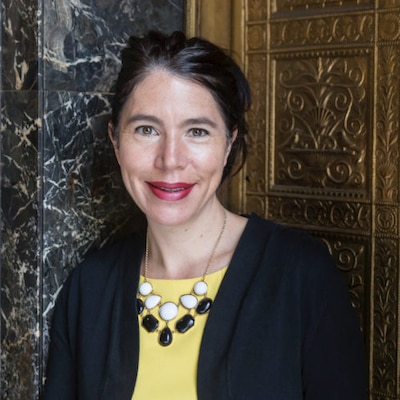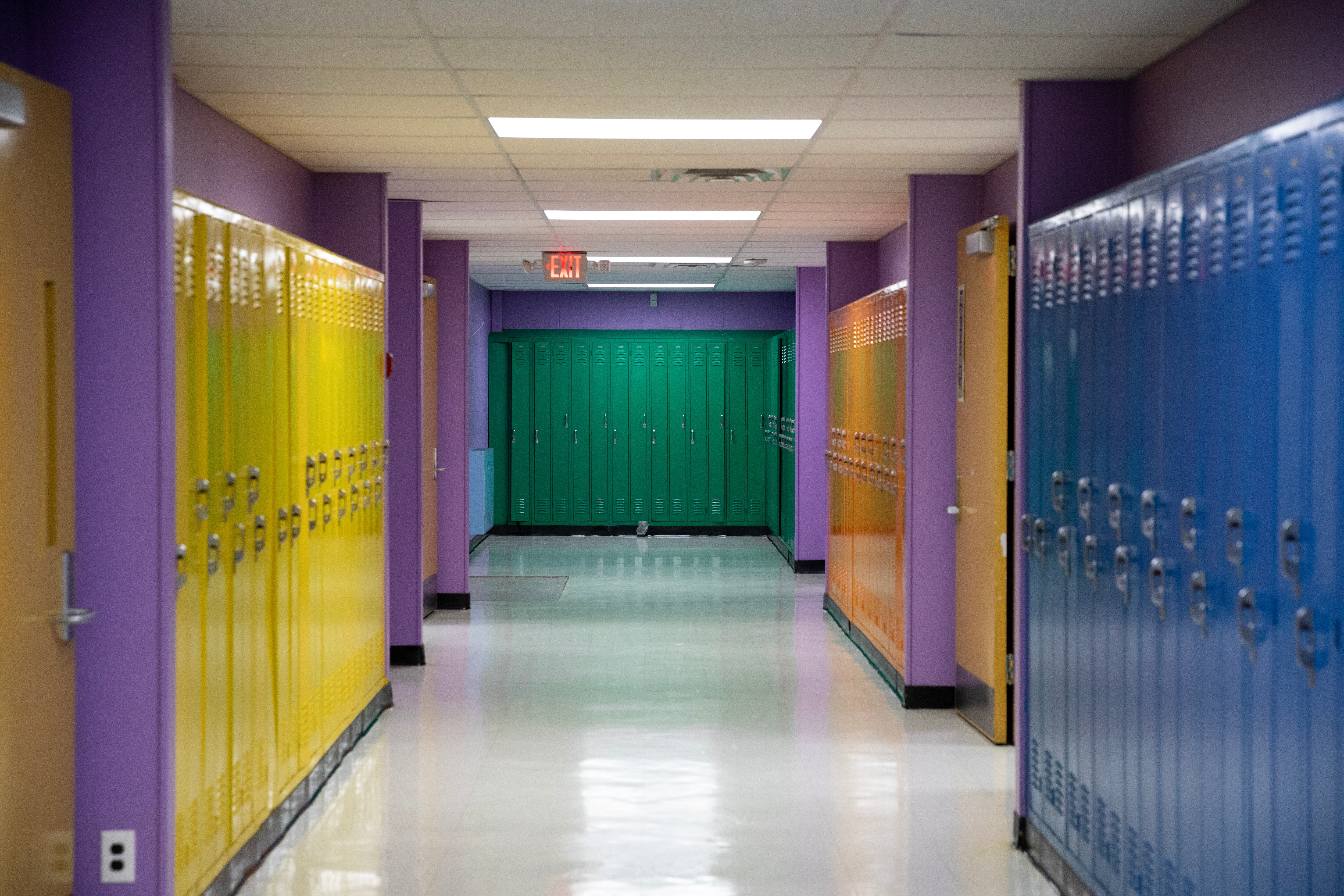Nearly 49,000 students returned to classrooms in the Detroit Public Schools Community District last week, with their backpacks and notebooks. Some of them are also carrying burdens that affect their mental health and time in school.
In Michigan, nearly 17% of Michigan teens ages 12-17 reported having a serious depressive episode in 2021, according to a recent study by Mental Health America. On top of this, a 2022 report showed that about 3% of children under 18 don’t have health insurance.
About 6% of Michigan children have private health insurance that doesn’t cover behavioral health services. This leaves schools to figure out how to deal with students’ mental health concerns.
Outlier Media spoke with DPSCD Deputy Superintendent Alycia Meriweather about the district’s plans to support students’ mental health needs.
This interview was condensed for length and clarity.
What are some of the most common mental health issues for students?
We assess issues that we’re seeing with students through the universal wellness screener. All of our students in kindergarten through 12th grade take it in the fall. Students who are classified as tier two, that means they would benefit from small group counseling sessions to dig deeper into processing what’s going on. In tier three, (it) really means a more intense intervention is needed, probably individual counseling.
“Over half of our students said that a loved one has died in the last eight months, and almost a third of our students had an overnight hospital stay for themselves or a family member.” — Alycia Meriweather, deputy superintendent, Detroit Public Schools Community District
So interestingly, (in kids being) sad and mad as well as worried, there was actually a slight decrease last year. But you’re still looking at pretty much over half of the students in kindergarten through fifth grade. Feeling scared: That’s about 42% of our young people.
How many of our students in grades six to 12 are experiencing trauma, depression or anxiety? There was a slight drop in both depression and anxiety year-to-year. But still, you’re looking at about a quarter of sixth to 12th graders experiencing symptoms of depression or anxiety.
When you’re looking at the national trend and the DPSCD trend, (it) was pretty interesting. From 2019 to 2021, depression symptoms increased by five percentage points nationally, but decreased by 10 percentage points in DPSCD. We think we made a very significant and intentional investment in behavioral health in the district with our COVID-19 funding, and then post-COVID funding. We believe the fact that the district is decreasing in depression is a result of us increasing our support.

What’s the root of these problems?
When you look at trauma exposure … over half of our students said that a loved one has died in the last eight months, and almost a third of our students had an overnight hospital stay for themselves or a family member.
What is the student-to-counselor ratio? Do you think it’s sufficient for addressing the mental health patterns above?
For kindergarten through eighth grade, it’s one counselor per 500 students. For high school, it’s one counselor per 400 students. If you ask me “Do we have enough resources to address all the needs that young people have?” I’m always going to tell you that we need more.
We often talk about equitable funding versus equal funding. When you give everyone the same amount of money, in per pupil allocation, you’re not really looking at whether certain students may need more, whether that’s for English language learners, students in poverty or students who are experiencing trauma. I’m always going to argue that our students need and deserve additional resources.
What’s the connection between the prevalence of physical violence and mental health in schools? What are the counselors’ roles in mediating these issues?
I cannot say that we’ve seen a direct correlation between students who have been identified (as needing mental-health services) … that refuse and (students who commit) code infractions (fighting, bullying, violence). What I can say is that when students who have untreated behavioral health issues do not receive support and intervention, they find other ways of dealing with those feelings. Some people internalize. Some people lash out.
If a student is bullying, or they were fighting, that would be written up. But the new code of conduct was just adopted by the board a couple of weeks ago. With the new code of conduct, we’ve been much more intentional about including, even on the first instance, (whether) the child is referred for a school social worker or school counselor.
There is a consequence for these actions, but you’re also indicating (they) need some support here.
When does DPSCD start to refer to other entities?
When we get to a point where a student is threatening harm to themselves or others. We do a threat assessment to determine if the threat is feasible: Does the student have the means to carry out the threat? And when a student is threatening harm to themselves, and it’s at a crisis point, it’s determined that they need immediate care. I would say when you get to a point of the threat assessment, proving that additional intervention is needed, that’s where it escalates to additional intervention and support beyond the school.
We actually have a confidential two-way communication system with Children’s Hospital that was developed in the last two years. We have the ability to refer students to the emergency department to let them know that this child is coming. Children’s Hospital has the ability to (tell) us confidentially that the child did come to the emergency room, and that they received treatment there. That did not exist before. We would have a threat assessment, and we would refer the child to additional support or the emergency department, but we never knew what happened unless the child or the parent would tell us.
How long do students have to wait, typically, to meet with counselors?
If a student needs services and their parent has given consent, we, to my knowledge, have not had a case where they could not receive service.
One of the barriers is that if a parent does not consent. Any child under the age 14 must have parental consent for small group counseling or individual counseling. If a parent refuses to sign the consent, we cannot render clinical services. If you’re 14 and up, you can give self-consent for a certain number of sessions. But after, you must have parental consent. I am aware of students who have been referred but do not have parental consent to commence services.
Due to the strain on the system overall — social workers, counselors, they’re in high demand. The school system has school counselor(s) and school social worker(s) also. So we’ve got multiple resources in play. So a student should not go without speaking to someone.
Where can DPSCD’s counseling services be improved, and how is the district working on this?
I think one of the biggest ways is really helping families, students and staff all understand the importance of behavioral health, and the importance of mental health services. One of our biggest barriers is that there’s still somewhat a stigma about getting behavioral health services. We continue to try to make sure that we’re communicating messages to families and students that just like you have to keep your physical body healthy, you need to keep your mental health in good shape also.
That’s not just when you had a traumatic experience, although that can heighten issues. In just living life, you have to know how to regulate your emotions, how to respond when things don’t go your way, and how to resolve conflict. The universal wellness screener is an important piece of our whole process, because we’re identifying (students) and referring them. That connection with the family after the referral happens is one of the places that we need to continue to improve on. That is a critical conversation, where you can convince the family that we want to help support your child.
I pride myself in being a good listener, but I am not a clinician. We have highly qualified clinicians who are being paid to help your child and so “let us help you” is the thing that I think we need to continue to figure out ways to communicate.
SaMya Overall is a reporter for Outlier Media. You can reach her at samya@outliermedia.org.






